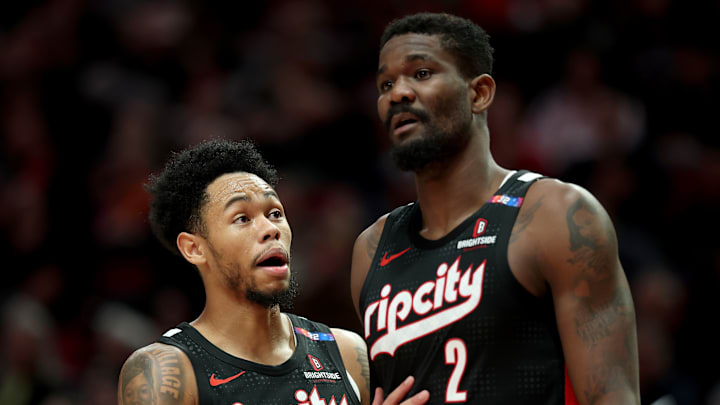The Portland Trail Blazers moved on from starters Anfernee Simons and Deandre Ayton this summer, and those moves alone could help them leap up the Western Conference standings. Portland was over six points worse per 100 possessions when at least one of Simons or Ayton was on the court last season; defense was the primary reason why that was the case.
Blazers will have an elite defense without Simons and Ayton
Simons has consistently been at the bottom of Portland's roster in defensive rating since entering the league in 2018. Ayton isn't as bad on that end of the court, but his absence is still significant considering his buyout clears the path for defensive anchor Donovan Clingan.
Portland's top ten-ranked defense down the stretch surprisingly put them in the play-in conversation last season. The Blazers had a much better net rating when Clingan was on the court, and his increased role in Ayton's absence played a key part in their improved play.
Clingan is now locked in as the starter and has reportedly improved his conditioning, with expectations of playing more than 30 minutes a night. With Clingan consistently anchoring the middle and the amount of defensive weapons Portland has, the Blazers should, at worst, finish the season as a top ten defensive team.
They are going to be impossible for offenses to figure out, especially since there's no longer a weak link to exploit on the perimeter in Simons. Shaedon Sharpe was Portland's second-worst defender last season, but has shown promising signs of developing into more of a two-way player this summer. His 6-foot-5 frame and elite athleticism are also a much different version of a weak link compared to the undersized Simons.
Could Portland be better on offense, too?
Portland emphasized the defensive side of the ball this summer and has successfully established its identity. But could this team improve on the offensive end as well?
They're certainly going to miss Simons' floor spacing as a team that ranked in the bottom five in three-point percentage the past two seasons. Between Simons and Ayton, the Blazers will have roughly 34 points to make up for each game. But Portland has multiple players that should be considered breakout candidates ready to take on increased roles, and you could make a case that Simons and Ayton have been holding them back.
The Blazers' offense was frustratingly stagnant last season, and those two starters each played a role in that. Simons is a solid playmaker, but Portland will have more ball movement between the low usage rate of an unselfish Jrue Holiday and Scoot Henderson, who is more of a traditional point guard than Simons. Clingan is also an underrated passer who looks to get his teammates involved more so than Ayton, who seemed to be shooting a midrange jumper every time he touched the ball.
At media day, Chauncey Billups emphasized Portland having a less predictable offense this season. "A lot more cutting and moving around. Not as much standing around," Billups said. "We'll be better about that, not being as predictable."
Even though there should be more overall movement, Billups also mentioned that Portland's offense isn't good enough to the point where it's their identity. The Blazers know they're going to win games because of the advantage they have on the defensive end. And this summer, they doubled down on that advantage.
